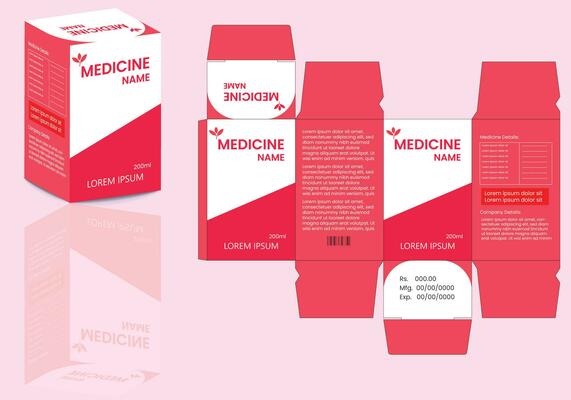- All
- Product Name
- Product Keyword
- Product Model
- Product Summary
- Product Description
- Multi Field Search
Views: 205 Author: XianDa Publish Time: 2024-12-07 Origin: Site

Content Menu
● The Evolution and Impact of Black Box Warnings
● Prevalence and Impact on Prescribing Practices
● The Role of Medicine Paper Box Factories
● Challenges and Controversies
● The Future of Black Box Warnings
Black box warnings have become an integral part of medication safety since their introduction in 1979. These warnings, mandated by the U.S. Food and Drug Administration (FDA), serve as the most serious labeling requirement for prescription drugs. They are designed to highlight potentially life-threatening adverse reactions or severe safety concerns that healthcare providers and patients need to be aware of when considering the use of a particular medication.

The implementation of a black box warning is a result of thorough data review, including clinical trials, post-marketing surveillance, and adverse event reports. When a significant safety concern is identified, the FDA collaborates with the drug manufacturer to develop appropriate warning language. This warning is then prominently displayed at the beginning of the package insert, enclosed in a black border, and printed in bold type to ensure it captures the attention of healthcare providers and patients.
The prevalence of medications carrying black box warnings is significant. A study found that within a 30-month period, over 40% of patients in an ambulatory care setting received at least one medication with a black box warning for a serious adverse drug reaction that could potentially affect them[1]. This statistic underscores the importance of these warnings in everyday medical practice.
The impact of black box warnings on prescribing practices is substantial. Healthcare providers must carefully weigh the risks and benefits of medications with such warnings, often exploring alternative treatment options. For instance, after the FDA issued a black box warning for antidepressants in 2004, linking them to an increased risk of suicidal thinking and behavior in young people, there was a notable decrease in antidepressant prescriptions.
Interestingly, medicine paper box factories play a crucial role in communicating black box warnings. These factories are responsible for producing packaging that contains the warning labels, adhering to strict FDA guidelines to ensure that black box warnings are prominently displayed and easily readable.
The collaboration between medicine paper box factories, pharmaceutical companies, and regulatory bodies is essential for maintaining patient safety and compliance with FDA regulations. The design and production of medicine boxes must meet all required standards to effectively communicate these critical warnings to healthcare providers and patients.

Despite their importance, black box warnings are not without challenges and controversies. One significant issue is the lack of physician compliance with these warnings. A 2005 study revealed that the range of compliance with black box warnings among doctors varied from 0.3 to 49.6 percent. This wide variation suggests that the effectiveness of these warnings may be compromised if healthcare providers do not consistently adhere to them.
Another concern is the potential for black box warnings to discourage people from taking necessary medications. The dramatic decrease in antidepressant prescriptions following the 2004 black box warning for increased suicide risk in young people is a prime example[9]. While the warning was intended to promote safety, it may have led to unintended consequences, such as undertreated depression.
As medical research advances and new safety data emerges, the landscape of black box warnings continues to evolve. The FDA regularly reviews and updates these warnings based on the latest available information. In recent years, there has been an increase in the use of black box warnings. A 2017 study found that nearly a third of all drugs cleared by the FDA pose a safety risk, with many leading to black box warnings.
Looking ahead, there may be opportunities to enhance the effectiveness of black box warnings through improved communication strategies and leveraging technology. For example, electronic health records could be used to provide real-time alerts about black box warnings to healthcare providers at the point of prescribing.
Black box warnings remain a critical tool in promoting medication safety and informed decision-making in healthcare. By highlighting serious risks associated with certain medications, these warnings help healthcare providers and patients weigh the benefits and potential harms of treatment options.
As the pharmaceutical industry continues to develop new medications, the importance of clear and effective communication about drug safety will only grow. Medicine paper box factories, pharmacists, healthcare providers, and patients all play important roles in ensuring that black box warnings achieve their intended purpose of promoting safe and effective medication use.
It is crucial for healthcare providers to stay informed about black box warnings and to communicate these risks effectively to their patients. Patients, in turn, should be proactive in understanding the risks associated with their medications and discussing any concerns with their healthcare providers.
While challenges remain in the implementation and adherence to black box warnings, ongoing research and improvements in communication strategies offer hope for enhancing their effectiveness in the future. As we move forward, the goal remains to strike the right balance between informing about risks and ensuring that patients receive necessary treatments, ultimately improving patient safety and outcomes in healthcare.